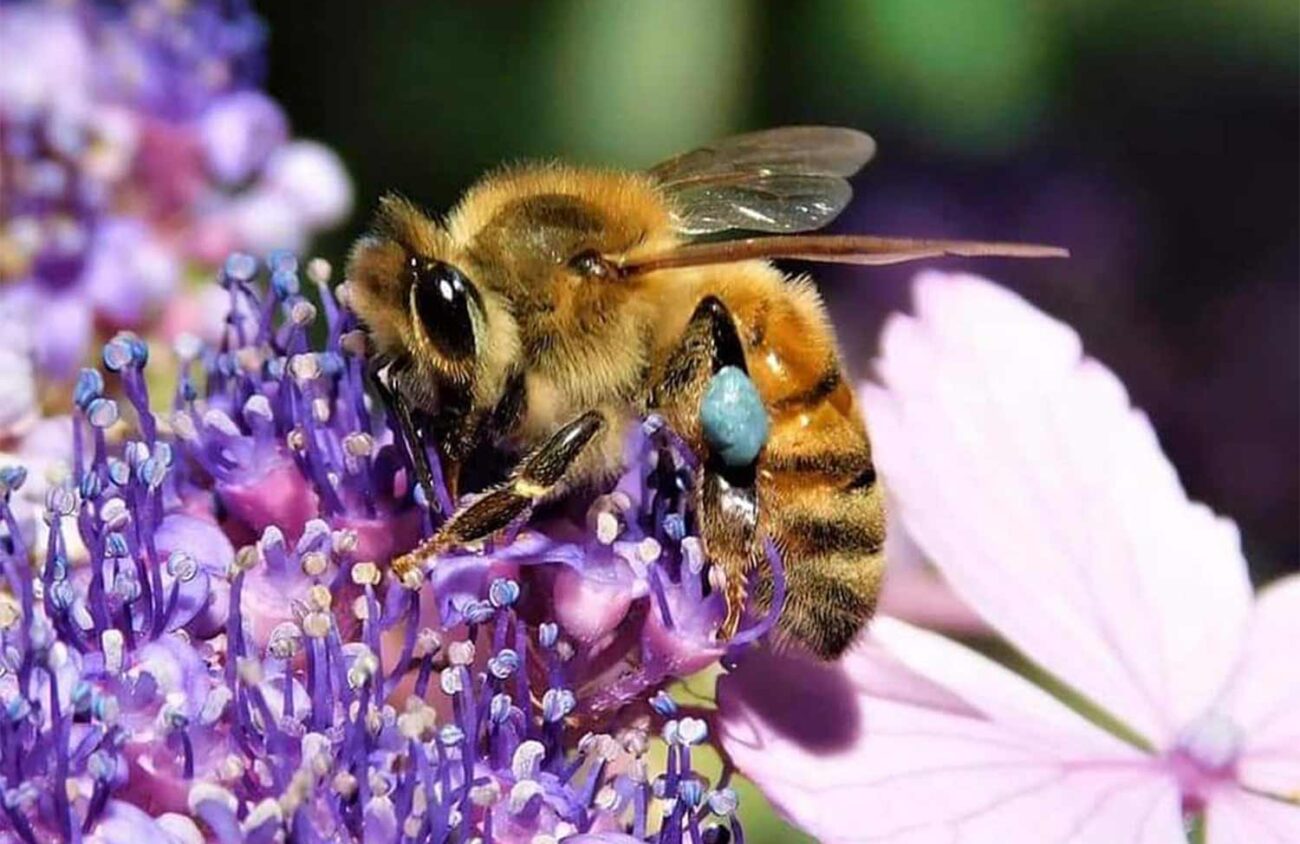In the early days of spring, lawn mowers buzz throughout Lane County, an American ritual that affects the buzz of bees and other pollinators.
Manicured grass lawns may fit the suburban American stereotype, but many local residents are transitioning to more pollinator-friendly yards, which support bees and other pollen-carrying species, a movement that addresses climate change.
“It provides food for bees,” says Erica Chernoh, assistant professor of practice at Oregon State University Extension Service Lane County. There are a variety of pollinator species that need to be sustained throughout the year, not just the bees that carry pollen to flowers during summer.
A grassy yard may be good for kicking a soccer ball or for dogs to run around on, but it doesn’t provide much of an ecological benefit. Most lawns are monocropped, meaning just one type of grass, and most people mow grass before pollen grows, Chernoh says.
And there’s the large amount of water that’s used for lawns. According to Eugene Water and Electric Board, Eugene customers use more than twice as much water in the summer months, very likely due to people watering lawns and gardens. The average water use by EWEB customers in December is around 500 million gallons, according to the utility’s data. That number spikes to nearly 1.3 billion gallons in both August and September.
Mike Masters, water operations manager at EWEB, says that while the agency doesn’t know exactly what people are using that water for, it estimates that the increase in water is due for irrigation — whether it’s for the lawn or other landscape uses.
A big part of what the environmental justice nonprofit Beyond Toxics does is love its pollinators, Executive Director Lisa Arkin says. This includes working with the city of Eugene’s Park and Open Space department to prioritize pollinator planting.
Adding native plants to yards increases diversity, feeding pollinators who then help feed humans, Arkin says. At her house, she planted fruit trees in place of grass. Bees pollinate the fruit trees, which provide her with plums and cherries that she eats. “We’re providing a thriving ecosystem instead of a lawn that is a monoculture and doesn’t support many diverse insects that are beneficial,” she says. “This monoculture is taking up a lot of space but isn’t serving a higher purpose of feeding beneficial insects.”
Replacing monoculture grass yards with native plants is becoming more popular with residents in Lane County, Chernoh says. And a part of that is because of climate change-related weather events, such as the 2020 heat waves and wildfires. “People are being more conscious about their front and back yards and want to make an impact here at home,” she says.
Chernoh says there are a few ways to transition from grass yards to native plants, depending on how much time and labor you have. One way is to suffocate the yard with a tarp or newspapers, or you can dig up the grass. (And just to remind readers, don’t ransack Eugene Weekly’s red newspaper boxes after reading this; come visit us at our office at 1251 Lincoln Street to pick up past issues out of our recycling bin.)
Arkin says she knows of gardeners who plant clover during the winter. Clover looks similar to grass, but its white flowers, which blossom in spring, feed pollinators.
Before you start digging up grass, Chernoh says it’s best to gauge the site’s elements. That includes taking note of how much shade and sun hits your yard and testing the pH balance of the soil so you know which plants to put in.
Chernoh says there are a lot of native plants to choose from, including trees, herbaceous plants and shrubs. Most native plants are perennials, meaning they can live for more than one season and you don’t have to replant them. “It’s easier for folks to maintain,” she says, but some plants may need to be pruned and maintained.
Native plants that work as pollinators are a way to support the bee population, as well as other insects that carry pollen, Chernoh says, even if it’s just one flowering shrub.
“Without bees we’re doomed. A number of crops are reliant on bees,” she says. “If we don’t keep them active, we’re going to be in a world of trouble.”
To find resources on native plants and more about upcoming classes at Oregon State University Extension Service, visit Extension.OregonState.edu.
Find EWEB’s guide for water efficient plants at EWEB.org.
To learn more about Beyond Toxics and upcoming bee count events, visit BeyondToxics.org.
